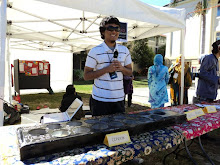Subitizing
Recognizing how many in a small group based on their appearance and with no need to count them at all.
For example, when children look at this box, they can recognize that there are 14 boxes with penguins out of 20.
Counting All
After counting say 3 objects and then counting 2 more when asked how many altogether the whole set is counted from the beginning again. For example, if children are firstly given 3 counters, they will count 1, 2, 3. And then if we give another 3 counters and ask them how many counters they have, they will start counting from 1, 2, 3 until 6.
Counting On
when the number in one group is known the total of the number in two groups is found by counting on from the first number. For example, if children are firstly given 3 counters, they will count 1, 2, 3. And then if we give another 3 counters, they will just continue to count 4, 5, 6.
Doubles
children love to learn their doubles to ten and beyond and some will learn them faster than they learn the count on 2s and 3s. For example, they are comfortable to count 4 + 4, 6 + 6 rather 3 + 6 or 7 + 2.
Turnarounds
When presented with say 2+5 the children will automatically count on 2 from the larger number rather than count on 5 from the smaller number i.e. 5+2 = 5, 6, 7 instead of 5+2 = 2, 3, 4, 5, 6, 7
Near Doubles
when the children are confidently using doubles they can be introduced to near doubles which are double plus or minus 1. So for 4 + 5 a child can work it out as double 4 plus 1 or by doing double 5 take away 1
Bridge to 10
Where a number is broken into two parts that enable 10 to be used as a bridge. For example, 7 + 6 = 7 + 3 + 3 = 10 + 3 = 13
Extended Number Facts
applying any of the above strategies to larger numbers, for instance using knowledge of 3+4 work out 30 + 40 or 13 + 4
* * *
Tips For Teachers:
1) Students should be exposed to diversified strategies in counting as to provide them opportunity to choose their own strategy that they are comfortable with.
2) Learning Mathematics is not only about getting the answer correct but teachers should be aware of how the students attained the correct answer.
3) The use of teaching aids and materials to help students in their counting is meaningful.
* * *
Tips For Teachers:
1) Students should be exposed to diversified strategies in counting as to provide them opportunity to choose their own strategy that they are comfortable with.
2) Learning Mathematics is not only about getting the answer correct but teachers should be aware of how the students attained the correct answer.
3) The use of teaching aids and materials to help students in their counting is meaningful.


0 comments:
Post a Comment